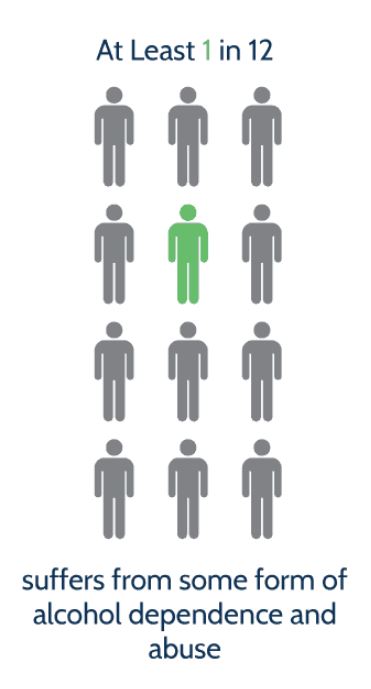What Is Pathological Demand Avoidance In Adults?
Pathological demand avoidance ADHD: Psychopathic Demand Although avoidance is typically linked to autism, those with ADHD can also experience it.
A characteristic known as pathological demand avoidance (PDA) has been linked to both autism and ADHD.
Even if you want to, it could be difficult to comply with obligations if you have PDA. You could go to great efforts to avoid satisfying any form of requirement. Another name for PDA is Extreme Demand Avoidance.
A person with PDA may appear to others to be purposely hostile or defiant. Yet PDA is not a choice, and managing demand avoidance behaviors usually requires treatment.
Pathological Demand Avoidance Syndrome
Professor Elizabeth Newson first used the phrase “pathological demand avoidance” in the 1980s. Although it’s been hypothesized to be a subtype of autism spectrum disease (ASD), people with ADHD also exhibit it. Moreover, both adults and kids may exhibit this behavior.
Neither the 10th revision of the International Statistical Classification of Diseases and Related Health Problems (ICD-10) nor the Diagnostic and Statistical Manual of Mental Disorders, Fifth Edition, Text Revision (DSM-5-TR), recognize PDA as a condition (ICD-10).
It is believed to be a profile on the autistic spectrum, according to the PDA Society. Nevertheless, a 2018 study found that it’s unclear whether PDA is a distinct disorder from autism or only a collection of linked symptoms.
PDA patients may go to great lengths to resist being required to do something. High levels of anxiety are linked to this demand avoidance.
These demands may be:
- External: imposed by others, like a deadline or instruction from a teacher.
- Internal: imposed by yourself, like a plan you’ve decided to follow.
- Explicit: such as a direct demand.
- Implicit: such as a polite request or unsaid expectation.
Those with PDA could shun their favorite pastimes and hobbies in addition to rejecting activities they don’t find fascinating.
Others may find this annoying, but it’s crucial to keep in mind that PDA is a need.
Autism And Pathological Demand Avoidance
PDA was first defined by Newson as a pervasive developmental disorder, not ‘typical autism,’ as it was then sometimes referred to. She claimed that it is a unique syndrome on the autism spectrum, similar to Asperger syndrome, which was combined with “autism spectrum disorder” with the release of the DSM-5 in 2013.
PDA is not a specific disease or diagnosis, but rather a “profile”—a collection of characteristics that may be used to identify many autistic people—that doctors and academics have lately described. PDA is “a profile on the autistic spectrum,” according to the U.K.-based NGO The PDA Society. The National Autistic Society of the United Kingdom describes PDA as a profile that necessitates an autism diagnosis first.
A 2018 study found inadequate evidence to identify PDA as a subtype of autism or a separate disorder. Some claim that despite the concept’s lack of concreteness, it is nonetheless valuable.
“In my own professional opinion, certain autistic children and young adults exhibit this behavior profile. Although it is unclear what this “profile” actually is, Judith Eaton, a consultant clinical psychologist and research associate at King’s College London in the U.K., thinks it could be a personality type interacting with autism.
It also could be something else other. Regardless of what we call it, I would like to think of it as children with complicated needs who require an individualized support program.

Skip To:
Learn More:
Pathological Demand Avoidance Syndrome (PDA) Factsheet
PDA Overview
Pathological Demand Avoidance Profile: A profile known as pathological demand avoidance (PDA) identifies people whose primary trait is to evade routine demands and expectations to a great extent.
What the research says about PDA
Within the research, there is some consensus that:
- The term PDA may be a useful term to flag up a range of co-occurring difficulties for many people, with or without an autism diagnosis.
- Any approach should be personalized to the needs of the individual.
Features of a PDA profile – Pathological Demand Avoidance Checklist
Pathological demand avoidance checklist adults: The distinctive features of a demand-avoidant profile include:
- Resists and avoids the ordinary demands of life
- Uses social strategies as part of avoidance, for example, distracting, giving excuses
- Appears sociable, but lacks some understanding
- Experiences excessive mood swings and impulsivity
- Appears comfortable in role play and pretense
- Displays obsessive behavior that is often focused on other people.

Get Your Life Back
Find Hope & Recovery. Get Safe Comfortable Detox, Addiction Rehab & Dual Diagnosis Trused Care.
7/365 Line (844) 597-1011Pathological Demand Avoidance Statistics
1 in 5
Almost one in five of all with ASD also had indications of having had PDA in childhood
Source: National Library Of Medicine
67 people
The total population of 15 to 24-year-olds in the Faroe Islands was screened for ASD, and 67 individuals were identified who met the diagnostic criteria for ASD.
Source: National Library Of Medicine
40 years
Over the past 40 years, some clinicians have used it to describe a set of personality and behavioral traits exhibited by autistic people who tend to refuse to cooperate with others’ requests. But the term is missing from the DSM.
Source: Spectrumnews.org
Pathological Demand Avoidance In Adults (pathological demand avoidance PDA): Avoidant Attachment Relationship With ADHD

Anecdotal accounts suggest that many PDA sufferers also fit the diagnostic criteria for attention deficit hyperactivity disorder (ADHD), although the PDA Society notes that “research is needed to identify whether there is any connection.”
Typically, there can be an overlap between the features linked to PDA Pathological Demand Avoidance and those linked to ASD. The association between ADHD and PDA may be due to the frequent co-occurrence of ADHD and autism.
Others could mistake ADHD for PDA, and vice versa. Executive dysfunction can be brought on by both ADHD and PDA, making it difficult to start tasks, finish tasks, and regulate urges.
But when it comes to PDA, demands are avoided only because they are demands. Although people with ADHD may occasionally avoid requests, this is not a typical feature of the disorder.
In a research published in 2020, ADHD outperformed autism as a predictor of PDA. In other words, PDA and ADHD may be more closely related to one another than autism is. However, additional study is required to examine this connection.
Pathological Demand Avoidance Symptoms: Pathological Demand Avoidance Examples (Examples Of Pathological Demand Avoidance)
The PDA (Pathologic Demand Avoidance) Society has identified a few crucial PDA traits, despite the fact that diagnostic manuals do not detect PDA.
The following are PDA’s symptoms:
- Resisting and avoiding ordinary demands
- Using social strategies to avoid demands
- Obsessive behavior often focused on other people
- Being superficially sociable but lacking depth in understanding
- Impulsivity
- Excessive mood swings
The PDA Society observes that PDA manifests differently in various individuals. Every PDA user is unique, and some may find some expectations easier to meet than others. PDA may also be more extreme in certain individuals than others.
Pathological Demand Avoidance Relationships
PDA is a severe disorder in which sufferers struggle to function without feeling the need to control their relationships, interactions, and tasks to the extent that they are unable to function in a social setting without the proper supports.
Pathological Demand Avoidance Test
This brief test will help determine if you may need to see a mental health professional for the diagnosis and treatment of Pathological Demand Avoidance. Only a mental health professional can accurately diagnose Pathological Demand Avoidance, and if needed, recommend a treatment plan.
*By taking this free quiz, you may obtain your results online and in your email box. You'll have the opportunity to opt-in to learn more about your symptoms, talk to a mental health consultant and join our newsletter. Rest assured your information is private and confidential. Results, consultations and assessment are provided without any cost to you and without any obligation. If you do not wish to provide your contact information, you may omit it during your quiz. Thank you for opting in and participating. To you best of health.
Get Help. Get Better. Get Your Life Back.
Searching for Accredited Drug and Alcohol Rehab Centers Near You?
Even if you have failed previously and relapsed, or are in the middle of a difficult crisis, we stand ready to support you. Our trusted behavioral health specialists will not give up on you. When you feel ready or just want someone to speak to about therapy alternatives to change your life call us. Even if we cannot assist you, we will lead you to wherever you can get support. There is no obligation. Call our hotline today.
(844) 597-1011Fearful Avoidant Attachment Style & Dismissive Avoidant Attachment Style
What Is Avoidant Attachment? What Is Avoidant Personality Disorder?
Emotional Avoidance: A person with a scared avoidant attachment style could appear to be seeking independence and fear being connected to others. Nonetheless, they also largely rely on the assistance of others. A person with this insecure attachment style wants to trust people yet is hesitant to do so. This form of attachment may also be referred to by psychologists as disorganized.
High Functioning Avoidant Personality Disorder: The idea underlying frightened avoidant attachments, as well as their signs, causes, and remedies, are covered in more length in this article. It also provides answers to a few frequently asked questions about scared avoidant attachments.
Anxious Avoidant Attachment Style (Anxious Avoidant): Anxious-Avoidant Attachment
Avoidance Anxiety: Psychology’s attachment theory examines how a person feels about their personal relationships and how they act toward them, especially under pressure.
Avoidant Anxious Attachment: Many kinds of attachment styles exist. Some people are secure in their relationships because of their attachment style, which enables them to feel close and secure.
Finding care and support for these people may be difficult since they have unstable attachment styles that are highly impacted by anxiety and dread.
One of these uneasy attachment forms is the anxious attachment style, where a person fears undervaluation or abandonment. They may strive for constant intimacy and excessive emotional expression in relationships in order to feel comfortable and secure.
The avoidant attachment style, where a person tends to have a negative image of others and assumes they cannot be depended upon or trusted in times of need, is another example of an insecure attachment. A person with this attachment style may put distance between themselves in relationships to foster a sense of independence.
A person with a scared avoidant attachment type could be afraid of intimacy and proximity. But at the same time, they rely greatly on and require the help of others.
Fearful-Avoidant Attachment Style: Disorganized / Fearful-Avoidant Syle (Disorganized Fearful Avoidant)
The disorganized attachment style is the most challenging kind of insecure attachment. It is frequently observed in adults who experienced physical, verbal, or sexual abuse as children.
When the child’s caregivers—their only source of safety—become a source of worry, an unorganized/fearful–avoidant attachment style emerges. Adults with this attachment style tend to behave very inconsistently and find it difficult to trust others.
Other mental health conditions including substance abuse, depression, or borderline personality disorder may also be present in such people. With the right care, this attachment technique can be altered, however, it may not be easy.
Dismissive Avoidant Attachment: Avoidant/Dismissive Attachment (Dismissive / Avoidant)
Avoidant Dismissive Attachment: An individual who suffers from fearful avoidant attachment may act in ways that suggest they wish to be close to someone. They might, however, also cut themselves apart from other people. They could be really close and affectionate one day, then avoid communication and behave coldly and dismissive the next.
What is Uncertainty Avoidance? Pathological Demand Avoidance Society
A cross-cultural phenomenon known as uncertainty avoidance outlines how various cultures or communities respond to and tolerate uncertainties. It refers more particularly to how communities deal with the ambiguity and uncertainty that permeate the main facets of governance.
Approach Avoidance Conflict – Conflict Avoidance
A circumstance where a single objective or alternative has both favorable and unfavorable elements or effects. Anxiety develops as one gets closer to their objective, yet as one moves away from it, their desire grows.
Avoidant Attachment Style In Relationships
Very autonomous, self-directed, and frequently averse to intimacy are avoidant attachment types. They are excellent at arguing their way out of any intimate circumstance and are commitment-phobic. They frequently lament how they feel “suffocated” or “packed” when people approach them closely. People frequently have paranoid thoughts that people are trying to confine or control them.
They always have a way out of any relationship. Always. Avoidants frequently design their lifestyle in order to avoid commitment or excessive intimacy.
It’s a sad fact that people who care the least about a relationship often manage it. Since avoidants are virtually always willing to go, they frequently have the power in both friendships and romantic partnerships. As opposed to nervous people, who let both of these things control them.
What is Avoidance Coping?
A person’s behavior is altered in order to avoid thinking about, feeling, or doing painful things. This is known as avoidance coping, also known as avoidant coping, avoidance behaviors, and escape coping. Avoidance coping refers to attempting to avoid difficulties as opposed to coping with them.
Although it could seem like a terrific technique to reduce stress, this isn’t always the case. Most of the time, the only way to successfully lessen the stress that a problem or stressor creates is to address it.
We aim for “stress management” rather than “stress avoidance” since we can often manage stress with good coping mechanisms, even though we can’t always avoid it.
Avoidant Personality Disorder Treatment
Treatment for personality disorders is challenging because those who suffer from them have ingrained thought processes and behavior patterns that have been present for a long time. Nonetheless, because their disease causes them a lot of grief and the majority of them want to form relationships, people with avoidant personality disorder typically make effective treatment candidates. People with an avoidant personality disorder may be motivated to adhere to their treatment regimens by this desire.
The primary form of treatment for avoidant personality disorder, like for other personality disorders, is psychotherapy. Individual counseling that focuses on altering a person’s behavior and thinking is known as psychotherapy (behavioral therapy). In therapy, the patient will likely work on conquering phobias, altering cognitive patterns and behaviors, and improving social coping skills.
People with this disease may benefit from taking medication, such as an antidepressant or anti-anxiety pill, to help manage their anxiety. Nonetheless, pharmacological therapy should be used in conjunction with psychotherapy for the best outcomes. The best results in treating patients with this disease come from family involvement and support.
First-class Facilities & Amenities
Trusted Integrated Addiction & Mental Health Rehabilitation Treatment
Rehab Centers TourEstablished Addiction Centers. Serene Private Facilities. Inpatient rehab programs vary.
Addiction Helpline (844) 597-1011Comprehensive recovery success experience, backed by a Team w/ History of:
15+
Years of Unified Experience
100s
5-Star Reviews Across Our Centers
10K
Recovery Success Stories Across Our Network
- Low Patient to Therapist Ratio
- Onsite Medical Detox Center
- Comprehensive Dual-Diagnosis Treatment
- Complimentary Family & Alumni Programs
- Alumni Coaching, Recovery & Personal Development Events
Pathological Demand Avoidance Treatment
PDA is a personality characteristic, not a disorder, hence there is no “treatment” for it.
Understanding PDA can help you manage the demands of daily life if you fit the PDA description. Learning about PDA can help you support someone who fits the PDA profile better if you’re a loved one or their instructor.
Both the PDA Society and the National Autistic Society advise using an individual strategy. The best course of action is to try to comprehend your particular scenario because not everyone who fits the PDA description is the same.
This may consist of:
- Recognizing triggers (for example, noticing what kinds of demands tend to trigger avoidance and anxiety)
- Figuring out which sort of demands work
- Finding methods to relieve anxiety and stress

You could gain from:
- Attempting to lessen tension and worry, which might make demand avoidance worse
- Requests that are rephrased to sound less triggering (for example, using indirect requests if they work)
- Reducing pointless regulations
- Depersonalizing requests in an attempt
- By working together to establish boundaries and unbreakable norms, you can make yourself or a loved one who engages in PDA feel more in control.
- Offering lots of notice before an event or anticipated demand, being adaptable, and making alternative plans when demand avoidance takes effect
You may want to think about talking to your doctor about attempting ADHD medication if you have ADHD as a co-occurring disorder. Your well-being and executive function may both improve as a result of managing your ADHD symptoms.
PDA Society-affiliated researchers have found that many people who fit the PDA profile learn to control their demand avoidance and build successful lives for themselves, frequently by working independently and on their own.
Specialized, Accredited, 5-Star Reviewed, Evidence-based Addiction & Mental Health Programs. Complete Behavioral Health Inpatient Rehab, Detox plus Co-occuring Disorders Therapy.
CALL(844) 597-1011End the Addiction Pain. End the Emotional Rollercoaster. Get Your Life Back. Start Drug, Alcohol & Dual Diagnosis Mental Health Treatment Now. Get Free, No-obligation Guidance by Substance Abuse Specialists Who Understand Addiction & Mental Health Recovery & Know How to Help.
We Level Up Dual Diagnosis Treatment
The definition of dual diagnosis (also referred to as co-occurring disorders) can differ between institutions. However, it is generally described as the specific treatment of someone who has been diagnosed with a substance use disorder and a mental health disorder at the same time. Treating dual-diagnosis clients is a critical aspect of our inpatient treatment experience because co-occurring disorders are strongly correlated with instances of substance abuse.
Creating a treatment plan that addresses the physical aspects of withdrawal, the psychological connection with drug use, and managing underlying mental health disorders is part of setting clients up for success. A thorough mental health analysis identifies possibilities for treatment. Meeting with mental health counselors and medical care providers means access to behavioral therapy and medication treatment. At our dual diagnosis treatment center, We Level Up can implement the highest quality of care.
We recognize the fragile complexities of how mental and substance abuse disorders can influence others and sometimes result in a vicious cycle of addiction. That’s why we offer specialized treatment in dual-diagnosis cases to provide the most excellent chance of true healing and long-lasting recovery.
It can be challenging to accept that you may be living with a mental illness, but once it is properly diagnosed and treated, treating the presenting case of substance abuse can be magnitudes easier. Only a properly trained medical professional can diagnose these underlying conditions. If you believe you are suffering from a disorder alongside addiction, we urge you to seek a qualified treatment center to begin your journey to recovery. Call We Level Up today.
Popular Pathological Demand Avoidance Syndrome FAQs
-
What is Pathological Demand Avoidance Syndrome (PDA)?
Pathological Demand Avoidance Syndrome is a term used to describe a profile of behaviors observed in some individuals on the autism spectrum. It’s characterized by an extreme avoidance of everyday demands and requests, which can lead to high levels of anxiety and stress. PDA is not an officially recognized medical diagnosis, but it is recognized as a subtype of ASD in some circles.
-
What causes PDA?
The exact cause of PDA remains unclear. Like other forms of autism, it is believed to result from a complex interplay of genetic, environmental, and neurological factors. Further research is needed to better understand the specific origins of PDA.
8 Steps & Tips for Maintaining Your Mental Wellbeing Informative Video
Video Script
8 Steps for Mental Wellbeing & How To Improve Mental Health In The Workplace
- Staying Positive
- Practicing Gratitude
- Taking Care of Your Physical Health
- Connecting With Others
- Developing a Sense of Meaning and Purpose in Life
- Developing Coping Skills
- Meditation
- Relaxation Techniques
Experience Transformative Recovery at We Level Up Treatment Centers.
See our authentic success stories. Get inspired. Get the help you deserve.
Start a New Life
Begin with a free call to an addiction & behavioral health treatment advisor. Learn more about our dual-diagnosis programs. The We Level Up Treatment Center Network delivers recovery programs that vary by each treatment facility. Call to learn more.
- Personalized Care
- Caring Accountable Staff
- World-class Amenities
- Licensed & Accredited
- Renowned w/ 100s 5-Star Reviews
We’ll Call You
Search We Level Up Mental Health Pathological Demand Avoidance Syndrome (PDA) Topics & Resources
Sources
[1] National Institute of Mental Health – ‘Depression’ (www.nimh.nih.gov)
[2] U.S. Food and Drug Administration (FDA) (www.fda.gov/)
[3] Depression Treatment » Drug Alcohol Addiction Rehab
[5] NIMH – https://www.nimh.nih.gov/health/publications/social-anxiety-disorder-more-than-just-shyness
[6] Selective Serotonin Reuptake Inhibitors – National Center for Biotechnology Information, U.S. National Library of Medicine
[7] ‘Anxiety Disorders’ – National Institute Of Mental Health (Nimh.nih.gov)
[8] Psychopharmacology of anxiety disorders – National Center for Biotechnology Information, U.S. National Library of Medicine
[9] Products – Data Briefs – Number 379 – September 2020 (cdc.gov) Depression – National Institute of Mental Health
[10] Coping with Stress – Centers for Disease Control and Prevention








